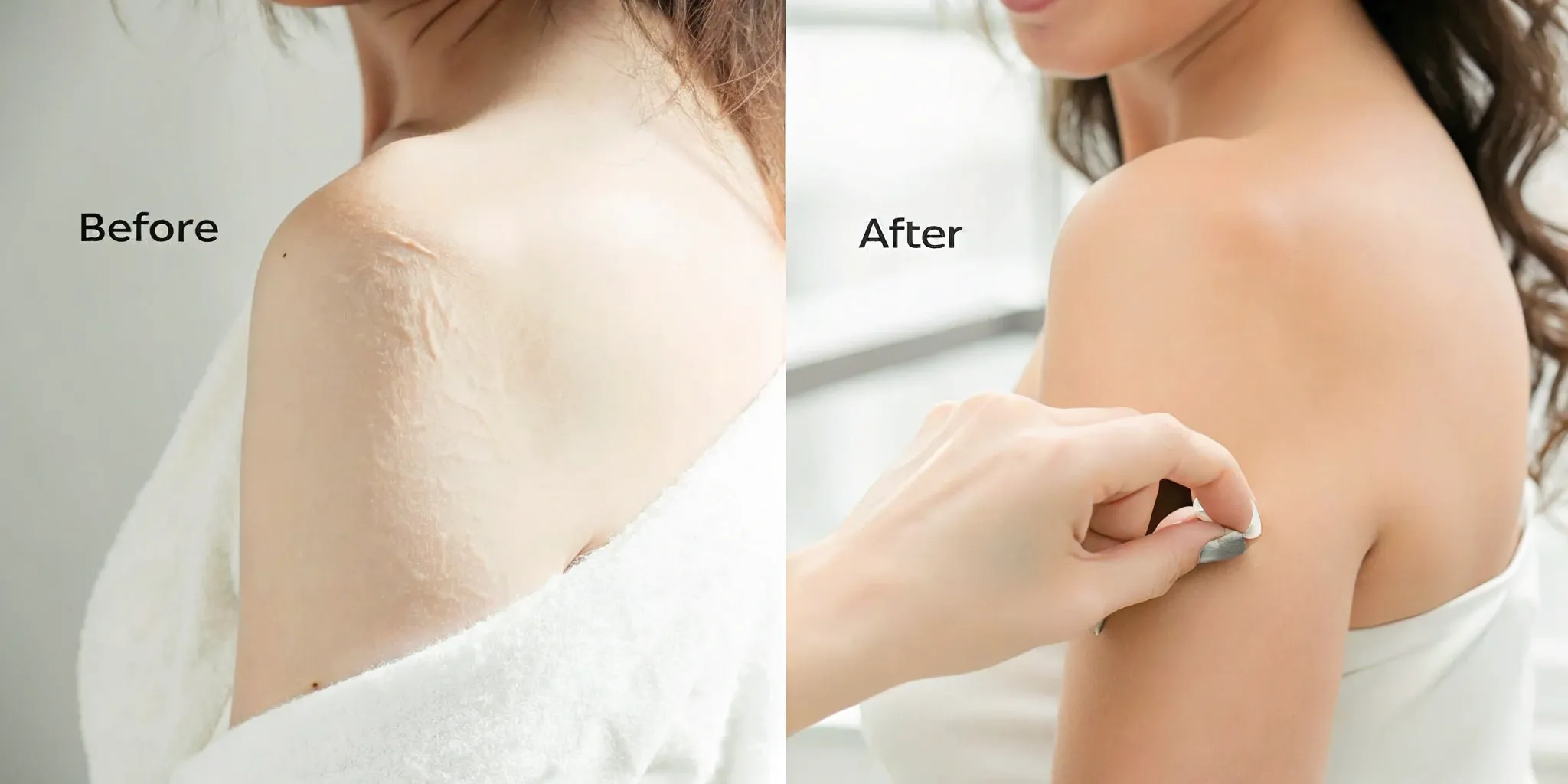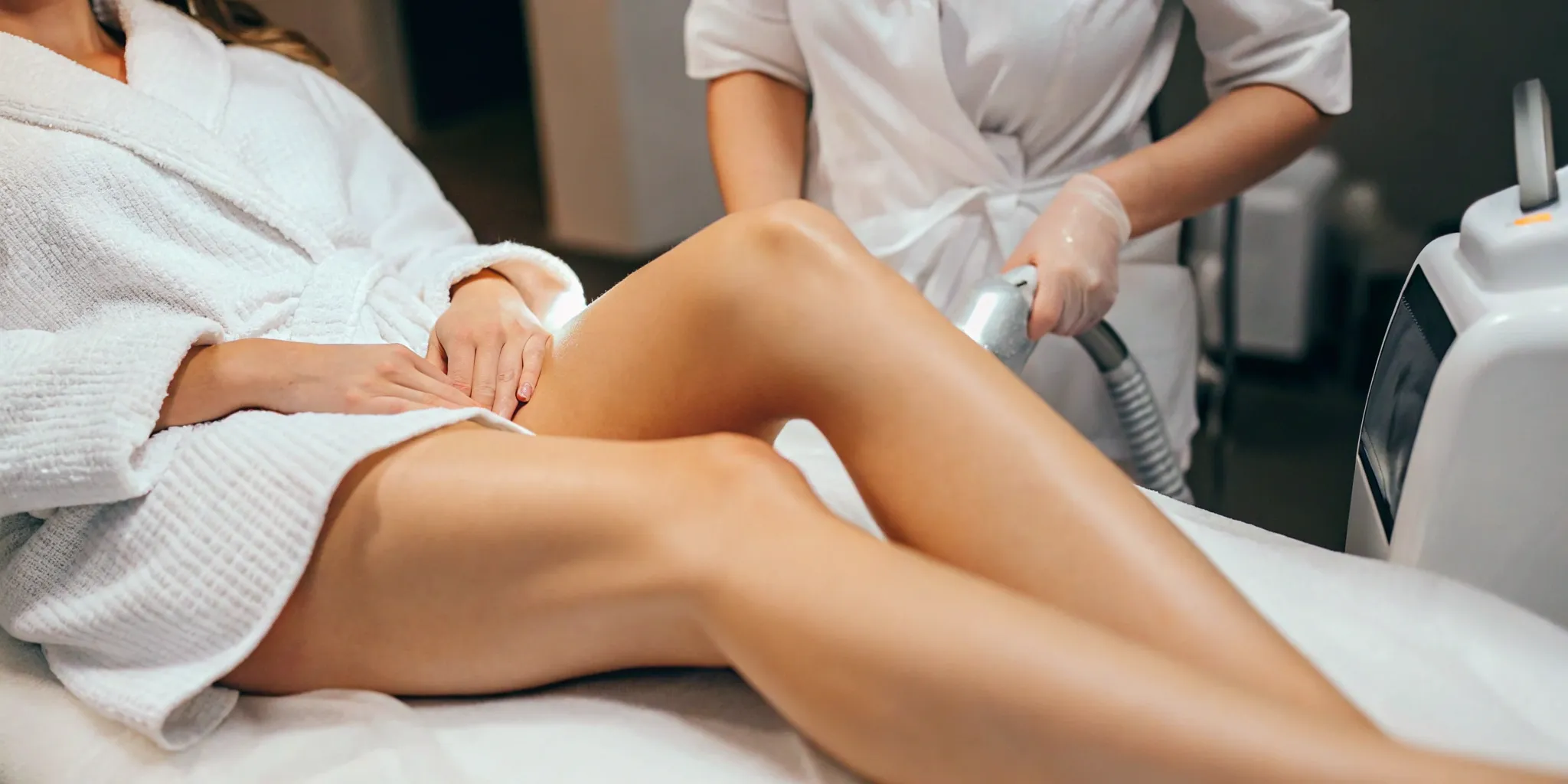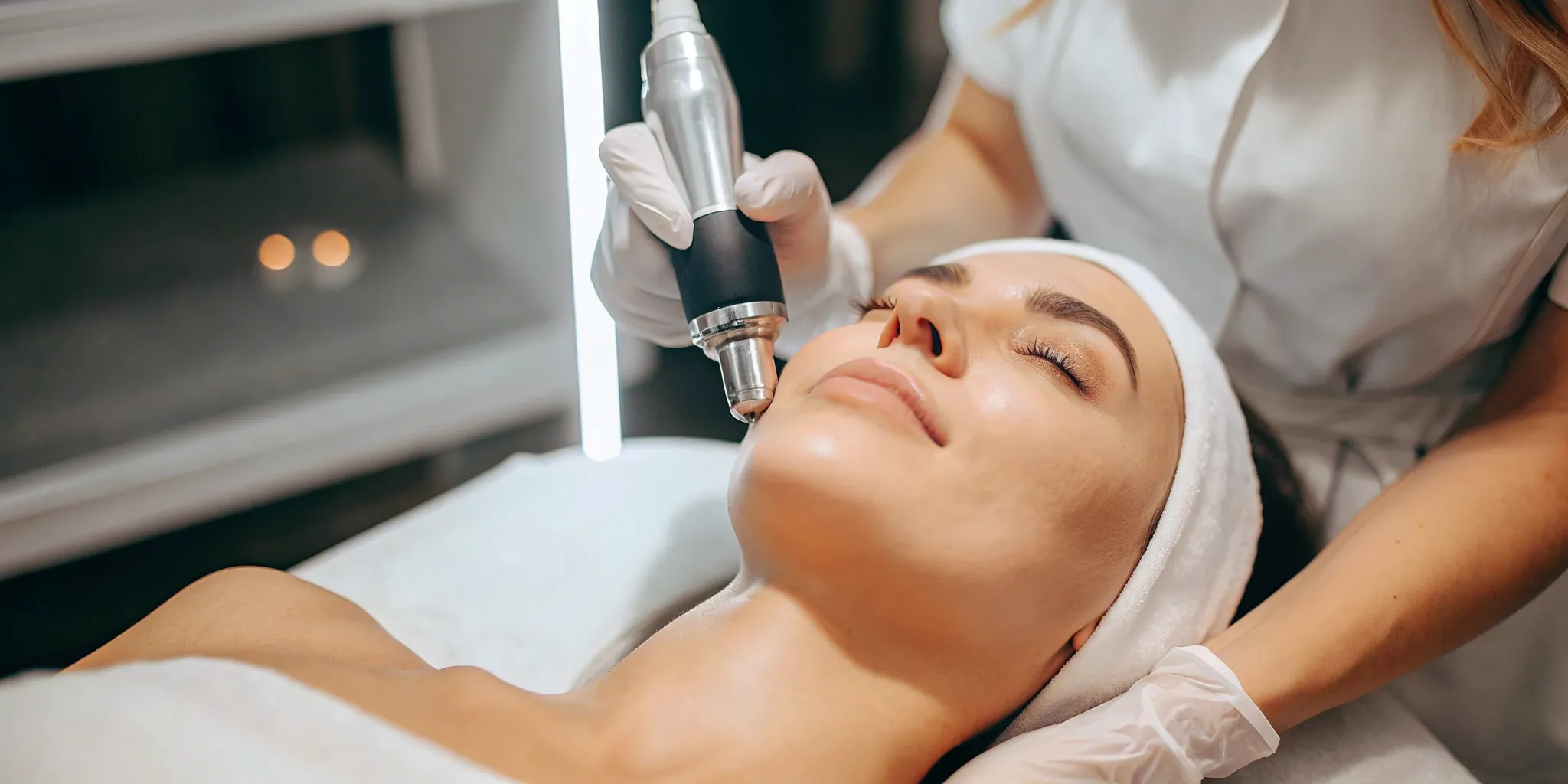Taking the first step towards tatoo removal can feel exciting, and maybe a little nerve-wracking too. A little bit of preparation can make a huge difference in how smooth and comfortable your experience is. It’s not just about what happens on the day of your appointment; it’s about knowing how to get ready and what to do afterwards to support your skin’s healing. This guide will give you practical, actionable tips on everything from choosing the right provider to essential pre-treatment and aftercare steps. We want you to feel supported and well-prepared for each stage of your journey.
Key Takeaways
- Know How It Works: Lasers target and break down tattoo ink into tiny fragments, which your body then naturally flushes out over a series of treatments.
- Embrace the Journey: Your tattoo’s unique features and your skin type will shape your timeline and results; expect some sensation, but it’s typically manageable.
- Team Up for Success: Choose a skilled provider for a personalized plan and follow their aftercare guidance closely to ensure safe healing and the best possible outcome.
How Does Laser Tattoo Removal Actually Work?
Thinking about laser tattoo removal? It’s natural to wonder exactly how it all works. While it might seem complex, the science behind it is quite straightforward, aiming to help your body naturally clear away unwanted ink. At Ultimate Image MedSpa, we’re committed to using effective technology to help you achieve clearer skin. Understanding the process can make you feel more prepared and confident as you consider tattoo removal. Let’s look at how lasers work their magic and what a typical session involves.
The Science: How Lasers Zap Ink
So, how exactly does a laser get rid of a tattoo? It’s pretty fascinating! Specialized lasers send out quick, concentrated pulses of light energy that are absorbed by the tattoo ink particles in your skin. This energy shatters the ink into tiny fragments. Once these particles are small enough, your body’s immune system kicks in and gradually flushes them out over several weeks. It’s a process that works with your body, not an instant fix. Effectiveness depends on tattoo size, colors (darker inks usually respond best), ink depth, and your skin type.
Different Lasers for Different Tattoos: What Works Best?
Not all lasers are created equal, and different tattoos might need different approaches. At Ultimate Image MedSpa, we use advanced systems like Q-switched or picosecond lasers. Picosecond lasers deliver energy in ultra-short bursts, breaking ink into even tinier particles. This can mean more efficient clearance, especially for stubborn colors, and potentially fewer sessions. The specific laser and settings are always tailored to your unique tattoo and skin type for the safest and most effective treatment. We’ll discuss the best technology for you during your consultation.
Your Tattoo Removal Session: A Step-by-Step Guide
Knowing what to expect makes the experience smoother. For your laser tattoo removal session, we first clean the area. A numbing cream is often applied beforehand for comfort. Then, your technician precisely targets the tattoo with the laser – it feels a bit like a rubber band snap but is quick. Sessions usually last 15-30 minutes, depending on tattoo size. Afterwards, we provide aftercare instructions. Most people need a series of treatments, typically 5 to 10, spaced weeks apart to allow for healing and ink clearance.
Starting Tattoo Removal? Here’s What to Expect.
Making the choice to remove a tattoo is a significant one, and it’s completely normal to have a list of questions running through your mind. What will it feel like? How long will it really take? Understanding the process can make the entire experience feel more comfortable and empower you to take the next step with confidence. At Ultimate Image MedSpa, we believe in clear, honest conversations, so let’s walk through what you can generally anticipate when you begin your laser tattoo removal journey.
Think of this as your friendly guide to the practical side of saying goodbye to unwanted ink. We’ll touch on the typical timeline, what to expect in terms of sensation (and how we help manage it!), the factors that contribute to a successful outcome, and we’ll even clear up a few common myths you might have heard. Every tattoo and every person’s skin is unique, so a personal consultation is always the best way to get advice tailored specifically to you. However, having a good grasp of the basics beforehand can help you feel prepared and informed. Our goal is to support you from your first questions to your final, fantastic results, ensuring you feel cared for every step of the way. We’re here to help you achieve the clear skin you’re hoping for.
How Many Sessions Will It Take? (And How Long?)
One of the first things people wonder about is the time commitment. Tattoo removal is a gradual process, not an instant fix. Most individuals require a series of treatments, typically ranging from 5 to 10 sessions, though this can vary. These appointments are strategically spaced several weeks apart—usually 6 to 8 weeks—to allow your skin to heal properly and for your body’s natural processes to flush out the fragmented ink particles.
While the overall journey can span several months, each tattoo removal session itself is relatively quick, often lasting between 15 to 30 minutes. During the treatment, advanced lasers, like the PicoWay system we use, break down the tattoo ink into microscopic particles. Your body then naturally absorbs and eliminates these particles, leading to the tattoo gradually fading over time. So, patience truly is a virtue here, but each short session brings you closer to your goal.
Let’s Talk About Pain: What It Feels Like & How to Manage It
It’s the question on everyone’s mind: does tattoo removal hurt? Let’s be upfront – there can be some discomfort. However, many people describe the sensation as less intense than getting the tattoo in the first place. It’s often compared to a rubber band snapping against the skin or the feeling of a sunburn. The good news is that the discomfort is usually brief and manageable.
Your comfort is a top priority for us. We can discuss various options to make the experience as easy as possible, including the application of a topical numbing cream before the procedure. These creams help to desensitize the skin’s surface. We encourage you to talk with our specialists about any concerns you have regarding pain so we can tailor a comfortable treatment plan for you.
What Makes Tattoo Removal Work Well?
The effectiveness of laser tattoo removal can be influenced by several factors, making each person’s experience unique. Key elements include the tattoo’s size, age, and location on your body. The colors of ink used are also very important; generally, darker inks like black and dark blue respond more readily to laser treatment than lighter shades such as yellow, light green, or purple. The depth of the ink and your individual skin type also play significant roles in the process.
It’s important to approach tattoo removal with realistic expectations. While many tattoos can be significantly lightened or appear fully removed, some inks can be more resistant, and complete 100% erasure isn’t always achievable. A thorough consultation at Ultimate Image MedSpa will allow us to assess your specific tattoo and provide a clearer picture of the results you can anticipate.
Clearing Up Common Tattoo Removal Myths
There’s a lot of information floating around about tattoo removal, and it’s easy to come across myths. A primary concern for many is safety and potential side effects. When performed by trained professionals using state-of-the-art equipment, laser tattoo removal is a very safe procedure. It’s normal to experience some temporary side effects like redness, swelling, and occasionally minor blistering in the treated area – these are typical signs that your skin is healing. With today’s advanced laser technology and proper aftercare, the risk of scarring is minimal.
The actual procedure is quite straightforward. First, the targeted area is thoroughly cleaned. A numbing cream may be applied for comfort. Then, the laser is used to precisely target the tattoo ink. Afterward, you’ll receive detailed aftercare instructions, which are crucial for optimal healing and achieving the best possible outcome from your aesthetic treatments.
Figuring Out the Cost and Value of Tattoo Removal
Considering tattoo removal is a significant decision, and it’s completely natural to wonder about the financial side and whether it’s the right path for you. It’s more than just the price tag; it’s an investment in yourself and feeling comfortable in your own skin. Let’s explore what to expect cost-wise and help you think about the overall value of removing that ink.
How Much Does Tattoo Removal Cost? (And What Affects the Price?)
Let’s get straight to the point on cost. Typically, a single session of laser tattoo removal can range from $200 to $500. The final amount you’ll invest depends on several unique aspects of your tattoo. The size is a major factor – a small design will cost less to treat than a larger, more intricate one. The colors present in your tattoo also matter, as some ink pigments respond more readily to laser treatment than others.
Additionally, where the tattoo is on your body and the specific laser technology used can influence the price. Different lasers target different ink colors more effectively, which can affect how many sessions you’ll need. We’ll go over all these details with you during a consultation to give you a clear understanding of the expected investment.
Does Insurance Cover It? Exploring Payment Options
This is a very common question, and it’s key for planning. Health insurance generally doesn’t cover tattoo removal because it’s viewed as a cosmetic choice, not a medical necessity. This means you’ll most likely be responsible for the cost yourself.
Knowing this upfront allows you to budget accordingly. Many professional clinics understand this is a considered purchase. At Ultimate Image MedSpa, we encourage you to ask us about any available payment options that might make the process smoother for your financial situation. Our goal is to help you achieve your aesthetic goals without undue stress.
Is It Worth It? Comparing Tattoo Removal to Other Options
Deciding if tattoo removal is “worth it” is deeply personal. When performed by experienced professionals at a reputable clinic, laser removal is a safe and effective method. You might experience some discomfort, often described like a rubber band snap or a slight sunburn, but for many, the outcome is truly transformative.
Consider the costs, the commitment to multiple sessions, and the temporary discomfort against alternatives like getting a cover-up tattoo (which still means having ink) or choosing to live with the current tattoo. The real value often lies in how much that unwanted ink affects your self-esteem and everyday life. If removal means feeling more confident and authentic, many find it’s an investment well made.
How to Prepare for Your Tattoo Removal
So, you’re thinking about saying goodbye to some ink? That’s a big step, and a little preparation can go a long way in making your tattoo removal journey smoother and more successful. Getting ready isn’t just about the day of your appointment; it starts with choosing the right people to help you and understanding what to expect. Let’s walk through how you can best prepare.
Finding the Best Provider for Your Tattoo Removal
First things first, you’ll want to find a reputable clinic with experienced professionals. When you’re searching, look for providers who are transparent about their laser tattoo removal process and have a solid reputation in your area. Don’t hesitate to ask about their qualifications, the types of lasers they use (as different lasers target different ink colors more effectively), and to see before-and-after photos of their actual clients.
A great provider will always offer a consultation. This is your chance to ask all your questions, discuss your tattoo, and get a feel for the clinic. At Ultimate Image MedSpa, we prioritize making sure you feel comfortable and informed. We’ll assess your tattoo, explain the process, and develop a personalized treatment plan just for you.
Essential Pre-Treatment and Aftercare Tips
Once you’ve chosen your provider and booked your sessions, there are a few things you can do to get your skin ready. In the weeks leading up to your appointment, try to avoid excessive sun exposure on the tattoo area, as tanned skin can be more sensitive to laser treatment. It’s also a good idea to discuss any medications or skin products you’re currently using with your technician. Some people find over-the-counter numbing creams helpful, but it’s crucial to consult your provider before applying anything to ensure it’s safe and won’t interfere with the treatment.
After your session, proper aftercare is absolutely key for healing and getting the best results. Your technician will give you specific instructions, which usually include keeping the area clean and dry, applying a recommended ointment, and avoiding sun exposure on the treated skin. Following these steps diligently will help minimize discomfort and support the healing process, as good aftercare plays a big role in how well your skin recovers.
Keeping It Real: Setting Your Expectations
It’s important to go into tattoo removal with realistic expectations. While modern laser technology has come a long way, the process takes time and multiple sessions. The exact number of treatments will depend on factors like the tattoo’s size, age, colors, and your skin type. Your provider will give you an estimate during your consultation.
And let’s talk about discomfort. While tattoo removal isn’t entirely painless, most people find it manageable, often comparing it to the sensation of getting the tattoo. There are ways to manage any discomfort, which your technician can discuss with you. It’s also good to know that not all tattoos can be 100% erased; some inks are more stubborn than others. The goal is significant fading, making the tattoo much less noticeable or preparing it for a cover-up if that’s your plan.
What Are the Potential Risks and Long-Term Results?
Deciding to remove a tattoo is a significant step, and it’s smart to go in with a clear picture of what to expect, both during the process and long after. Like any cosmetic procedure, laser tattoo removal has potential side effects and variables that can affect your final outcome. Understanding these upfront will help you feel more prepared and confident as you move forward. It’s all about knowing what your skin might go through and how we can work together to achieve the best possible results.
Think of this as a partnership: your commitment to the process and our expertise in guiding you. We’ll discuss everything from the immediate sensations and aftercare to what your skin might look like years down the line. The goal is always to make your experience as smooth and successful as possible, ensuring you’re happy with your decision. Let’s talk through what you might experience and what contributes to getting the best possible results, so you can feel fully informed.
Managing Common Side Effects Like a Pro
It’s totally normal to experience a few temporary side effects after a laser tattoo removal session. Think of it as your skin’s way of saying, “Okay, I’m working on this!” Most commonly, you might see some redness and swelling in the treated area, similar to a sunburn. Some people also experience blistering, which is a natural part of the healing process as your body works to flush out the ink particles. While scarring is a potential risk with any skin procedure, it’s generally minimal with modern laser technology and proper aftercare. We’ll guide you every step of the way on how to care for your skin post-treatment to keep you comfortable and promote healing.
Will Your Skin Change? A Look at Scarring and Long-Term Effects
One of the biggest questions people have is whether their skin will look different permanently, beyond just the tattoo being gone. The good news is that for many, the skin returns to its natural state. However, it’s important to know that not all tattoos can be completely erased, as some ink colors and types are more stubborn. Any immediate side effects like redness or swelling are usually temporary and manageable with the right care. When it comes to scarring, choosing an experienced provider who uses up-to-date laser technology significantly reduces this risk. Following aftercare instructions diligently is also key to helping your skin heal beautifully and minimizing any long-term changes.
How Successful Is It? Factors for the Best Outcome
The success of your tattoo removal journey depends on a few key things. Think of it as a team effort between you, your tattoo, and your technician! Factors like the size, color, and age of your tattoo, the depth of the ink, and even your skin type all play a role. Generally, darker inks like black and dark blue respond more readily to the laser, while lighter colors such as yellows and greens can be more challenging. Most people need a series of treatments, typically between 5 to 10 sessions, spaced several weeks apart. This allows your skin to heal properly and your body to naturally eliminate the broken-down ink particles.
The Emotional Side of Removing Your Tattoo
Let’s be real, the process of removing a tattoo isn’t just physical; it can be an emotional one too. There’s the anticipation, the commitment to multiple sessions, and of course, the sensation during the treatment. Many people describe the feeling of the laser as similar to a rubber band snapping against the skin or a mild sunburn. While it can be uncomfortable, most find it less intense than getting the tattoo in the first place. Remember, proper aftercare is crucial not just for physical healing, but also for making the overall experience more comfortable. It’s okay to have a mix of feelings about saying goodbye to a piece of your past, and if you have questions or need support, please reach out to us.
Related Articles
- Laser Tattoo Removal | Everything You Need to Know
- Laser Tattoo Removal Treatment In Texas | Erase Your Ink
- Cheap Laser Tattoo Removal: Finding Quality & Affordability – Ultimate Image MedSpa
- Tattoo Removal Services: A Comprehensive Guide – Ultimate Image MedSpa
Frequently Asked Questions
If I’m just starting to think about tattoo removal, what’s the most important first step? Your best first move is to schedule a consultation with a reputable clinic. This isn’t just a quick chat; it’s where a professional will look at your specific tattoo, discuss your skin type, and explain the type of laser technology they recommend for you. It’s your opportunity to ask all your initial questions and get a personalized plan, so you know what to expect from the get-go.
My tattoo has a lot of bright colors. Will laser removal still work for me? It’s true that different ink colors respond differently to laser treatment. Darker inks like black and dark blue tend to break down more easily. Lighter and brighter colors, such as yellows, greens, and purples, can be more stubborn and might require more specialized laser wavelengths or additional sessions. During your consultation, we can assess the specific colors in your tattoo and give you a realistic idea of how effectively they can be treated.
What can I personally do to help my skin heal well between tattoo removal sessions? Following the aftercare instructions your technician gives you is absolutely crucial. This usually involves keeping the treated area clean, applying any recommended soothing ointments, and protecting it from the sun. Staying well-hydrated and maintaining a healthy lifestyle can also support your body’s natural healing processes, which play a big part in clearing out those ink particles.
Is it realistic to expect my skin to look exactly like it did before I got the tattoo? The goal of laser tattoo removal is to significantly fade or, in many cases, make the tattoo virtually invisible. While modern lasers are very effective, complete 100% removal where the skin looks absolutely untouched isn’t always guaranteed for every tattoo and every skin type. Factors like ink depth, colors, and your skin’s individual healing response play a role. We aim for the best possible clearance, leaving your skin looking much clearer.
Aside from the cost of sessions, are there other financial aspects I should consider? While the per-session cost is the main expense, it’s good to remember that tattoo removal is a multi-session process. You’ll want to factor in the total number of estimated sessions to understand the overall investment. Also, consider any recommended aftercare products, like soothing creams or sunblock, which are important for healing but are typically minor additional costs.







